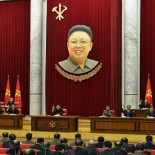20 x 10 = Party-Army Solidarity?
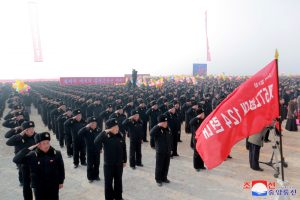
The first phase of the 20 x 10 Plan’s opening of regional factories seemed to have drawn to a close in mid-February. An homage to Kim Jong Il’s Changsong County local economic development movement, the 20 x 10 policy aims to open 20 local production units per year during the next 10 years.
We have no reason to think Kim Jong Un (KJU; Kim Cho’ng-u’n) has not been sincere in initiating the 20 x 10 Plan or the 8th Party Congress’ rural development plans. KJU is assuming a degree of direct responsibility over North Korea’s domestic economy. It fits into his longer term aspirations at state development (“Make DPRK Great Again!”) and going local could prove effective.
On the other hand, with additional production units will come a two-fold expansion or adjustment of the DPRK’s security footprint. More factories means more locales for the State Security Department to recruit sources to keep tabs on local populations (hey—maybe they have AI for that). More production units means more Public Security police patrol activity and public safety activities.
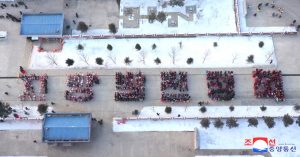
Additional production units in factories could also mean expanded personnel numbers for the Worker-Peasant Red Guards [WPRG] and other elements of the DPRK’s reserve military training units [RMTUs]. After all, WPRG personnel contributions derive from industrial sites. It stands to reason that new regional factories could constitute additional contributions to North Korean paramilitary forces and national civil defense missions.
The initial openings of regional factories occurred in some interesting locations. The first one was in Songchon County, which is the location of the former command element of the Korean People’s Army [KPA] Strategic Force (f/k/a KPA Ballistic Missile Bureau, f/k/a KPA Artillery Training Guidance Bureau). Songchon also has pieces of the Second Economic Committee [SEC] headquarters. When KJU moved from regional factories to local hospitals and health care centers, it was in Kangdong County, Pyongyang, where SEC headquarters is located.
We should be mindful that these locations’ close proximity to the defense industry and KPA Ground Forces units could be pragmatic. Situated near these locales, construction of the regional factories is a matter of efficiency and convenience. They have the manpower and dedicated supply for construction and industrial processes.
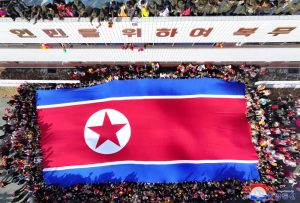
Seven of the 20 regional factories opened are located within the KPA’s forward operating area. If war were to break out on the Korean Peninsula, WPRG units and other civil defense elements would discharge support missions in the rear area doing things that these regional factories are intended to do for DPRK citizens in peacetime—supplying food and clothes and maintaining or repairing weapons systems.
Without trapping ourselves in an analytic rabbit hole, we might consider regional factory openings in Chaeryo’ng and Yont’an Counties. This places them near Sariwo’n which forms the outer line of KPA forward and rear operating areas. Chaeryo’ng County is at the rear of the IV Corps and close to KPA light infantry and special operations forces [SOF].
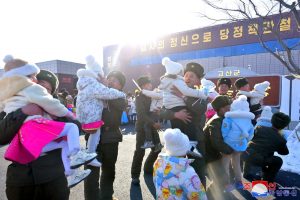
If we venture into the KPA’s rear operating area, then we will find Kyongsong County where regional factories have opened is the same place as the HQ element of IX Corps. Onch’o’n County sits near the III Corps command element and the Onch’o’n Air Bases which form outer lines of the DPRK’s Praetorian Guard defending Pyongyang and the North Korean leadership. Out in the east, a regional factory opened in Hamju County, South Hamgyo’ng; not only is this the area of the VII Corps, but Hamju is the rear HQ of VII Corps. As such, regional factories would be mobilized to supply food and other pertinent materiel in the event of war or even a declared “semi state of war.” Finally, Kim Hyong Jik County has bridgafes of the X Corps and elements of the Border Security Command.
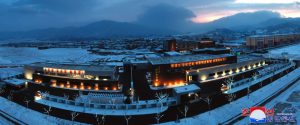
Of course this is a cursory, quick ‘n’ dirty assessment. We might consider that a dual use and wartime contingency plan the local factories of the 20 x 10 Plan gets skin in the game for consistent KPA support to the civilian economy.
We might see with some of these locales that regional factories can serve DPRK citizens in peacetime but shorten supply lines for the KPA should crisis or war break out. The combination of expanding RMTU and/or WPRG presence along with rear area civil defense missions expands the purview and authority of provincial or local central military committees (which assume C2 for civil defense and wartime production). This in turn strengthens the authority of the Central Military Commission at the national level. This does not even account for the potential that these regional factories expand the footprint of North Korea’s defense industry.
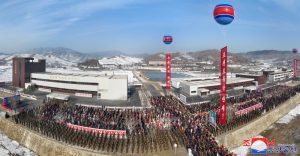
Further analyses and observation will be warranted as the 20 x 10 Policy goes forward. But, by golly and oh my stars, this gives new significance and meaning to the concept of “People-Army solidarity.”
Regional Factories Opened under 20 X 10
1st Phase
20 December 2024
(reported 21 DEC 2024)
So’ngch’o’n County Regional Factories
South P’yo’ngan
7 January 2025
(reported 8 JAN 2025)
Chaeryo’ng County Regional Factories
South Hwanghae
8 January 2025
(reported 9 JAN 2025)
Sukch’o’n County Regional Factories
South P’yo’ngan
10 January 2025
(reported 11 JAN 2025)
Unp’a County Regional Factories
North Hwanghae
12 January 2025
(reported 13 JAN 2025)
Kyo’ngso’ng County Regional Factories
North Hamgyo’ng
14 January 2025
(reported 15 JAN 2025)
U’nch’o’n County Regional Factories
South Hwanghae
16 January 2025
(reported 17 JAN 2025)
Yont’an County Regional Factories
North Hwanghae
18 January 2025
(reported 19 JAN 2025)
Hamju County Regional Factories
South Hamgyo’ng
20 January 2025
(reported to 21 JAN 2025)
Onch’o’n County Regional Factories
Namp’o
24 January 2025
(reported 25 JAN 2025)
Kujang County Regional Factories
North P’yo’ngan
25 January 2025
(reported 26 JAN 2025)
Usi County Regional Factories
Chagang
29 January 2025
(reported 30 JAN 2025)
Kosan County Regional Factories
Kangwo’n
30 January 2025
(reported 31 JAN 2025)
Kuso’ng County Regional Factories
North P’yo’ngan
31 January 2025
(reported 1 FEB 2025)
Orang County Regional Factories
North Hamgyo’ng
1 February 2025
(reported 2 February 2025)
Changp’ung County Regional Factories
Kaeso’ng
3 February 2025
(reported 2 FEB 2025)
Ku’mya County Regional Factories
South Hamgyo’ng
5 February 2025
(reported 6 FEB 2025)
Tongsin County Regional Factories
Chagang
7 February 2025
(reported 8 FEB 2025)
Unsan County Regional Factories
North P’yo’ngan
9 February 2025
(reported 10 FEB 2025)
Ich’o’n County Regional Factories
Kangwo’n
11 February 2025
(reported 12 FEB 2025)
Kim Hyo’ng Jik County Regional Factories
Yanggang
